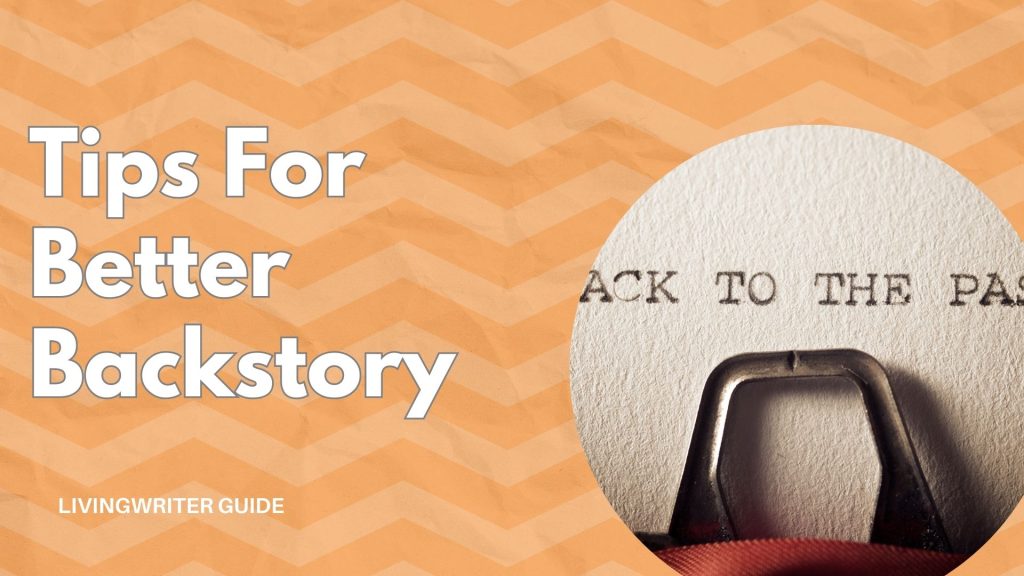How To Do Backstory (Without Flashbacks) – 5 Best Tips

Giving readers a look at past events is a great way to give context and depth to characters, motivations, and the present conflict. Often, this means jumping away from the present story and narrating the past via a “flashback.”
While flashbacks do work, they are often overused and can disrupt the flow of the story. Luckily, there are quite a few other ways of getting across key pieces of info from your characters’ pasts. Today, I’ll be giving you five tips on how to do backstory without having to resort to flashbacks. Ready? Cool. Let’s jump in.
Table of Contents
What Is Backstory?
First things first, let’s answer the question, “What is backstory?” so that we’re all on the same page. It’s best to define backstory (in terms of a novel) as anything that happened to a character before the start of your novel. Important events from the past shape characters’ motivations, worldview, etc, and the plot as a whole.
5 Ways To Do Backstory Without Flashbacks
Now that we know what backstory is and why it’s important, let’s look at some unique ways to convey things from the past without having to jump away from the main plot. I want to start with three quick bonus tips to consider.
Backstory Quick Tips

- Limit how much you use – Use the minimal amount of backstory needed to convey key information.
- Start In The Present – Get readers invested in current events before jumping into the backstory.
- Pepper It In: Give small amounts throughout the story and build up to big things. It’s often best to avoid long, extended sections of backstory.
Subtle Backstory Using S.A.I.D
Instead of jumping to the past, we’re going to use small, intentional details in the present to convey things about the past to the reader. You can do this by adding details to a character’s setting, actions & appearance, introspection, and dialogue. You can remember this because it spells the word “said.”
1. Setting
The places that a character would spend a lot of time (their house, bedroom, cars, workplace, etc.) can all have details that point to the past. Specific pictures on desks or walls, the clothing in their closet, or even stickers on their car can all speak volumes.
For example, if I describe a character’s van as being plastered with faded stickers from national parks across the country, it’s safe to assume that they have traveled in their past. You may not be able to tell everything about someone’s past from this alone, but remember, the goal is to pepper backstory in gradually.
2. Action & Appearance
Even more telling than setting are your character’s actions and appearance. More specifically, how they respond to things or habits they have. If they constantly check that their doors are locked, that’s telling. If they won’t go into the subway either, now you’re starting to paint a picture of their past using actions in the present.
You May Also Like: How To Best Use Cussing In Your Novel – 8 Tips
As for appearance, things like tattoos, scars, etc., can be useful, convenient ways to tell readers subtle things about your character’s past. I find this is also a catalyst for naturally adding details into your descriptions because there’s some amount of meaning tied to the unique things about their appearance.
3. Introspection
Introspection is a phenomenal way to explore backstory in a bit more detail. Characters can simply think back and reflect on things they’ve done, seen, or experienced. Just be sure to use proper cause and effect so the introspection doesn’t feel random.
This works well because you can give quite a lot of specifics while still staying in the present. This also gives you the opportunity to filter the backstory through the POV of that character, which may be unreliable, biased, or different from how other characters remember things.
4. Dialogue
Conversation (both what’s said and the unsaid subtext) can convey a ton of subtle backstory. That said, it has to be natural and not just a tool for getting across backstory. This is known as “as you know, Bob” dialogue and might look like this – “Remember how we lost the Peterson account last quarter, Bob? Well…”
If you want to incorporate more backstory through dialogue, I recommend reading this deep dive on How To Write Dialogue In A Story. I cover using dialogue to drive the plot and reveal info in a natural way. And common mistakes that leave your conversations sounding flat, unrealistic, or indistinguishable from each other.
5. The Past Made Present Technique
I’ve saved the best for last – My final tip is known as the “past made present” technique. It’s where you incorporate something that happened in the past into the present moment. This allows characters and readers to experience the “past event” in the present.
Not only can you shamelessly give readers tons of detail, but the characters can experience the event in real time, along with the reader. There are a few ways you can do this. My favorite is to have the character watch a video of something that happened before.
However, this method works just as well in sci-fi or fantasy novels using time travel or having people go into someone else’s memories or mind. Regardless of how you do it, bringing the past to the present instead of the other way around is a fresh, fun, effective way to do backstory without a flashback.
Conclusion
There you have it, my friends – Five ways to do backstory without using flashbacks. The key is to be subtle and provide context clues using every tool available to you to convey key details about a character’s past. And when you do have to do full scenes from the past, look for a way to bring it to the current point in the narrative instead of jumping back.
Now all that is left to do is get out there and write. If you don’t already use LivingWriter for your novels, check it out via the link. Voted the best writing app of 2025 – From story outlines to more unique characters, LivingWriter helps you reach your full potential.